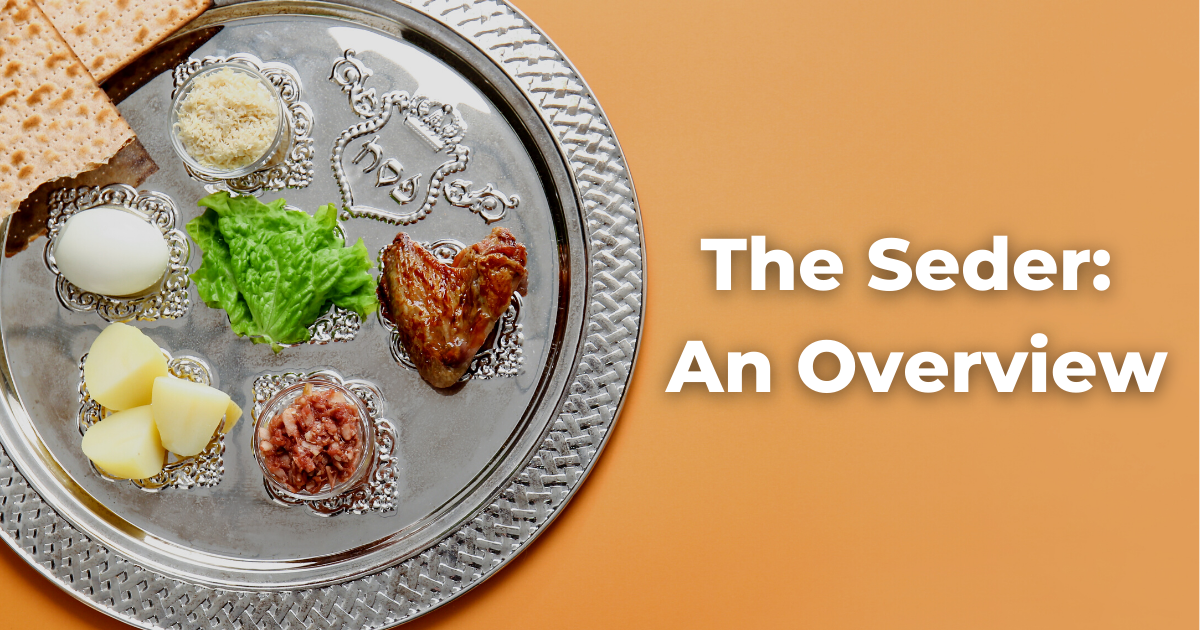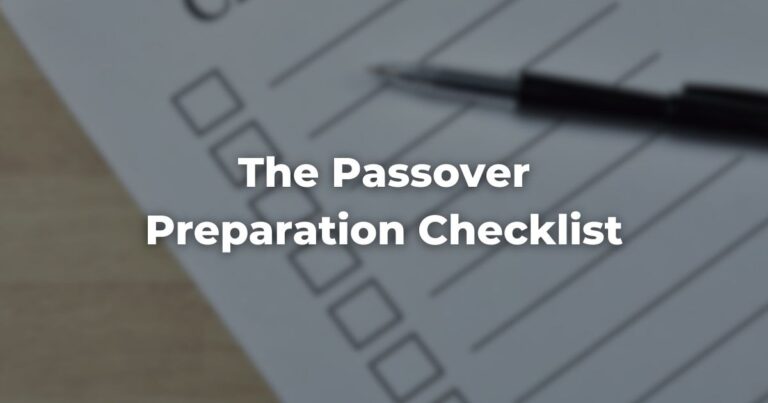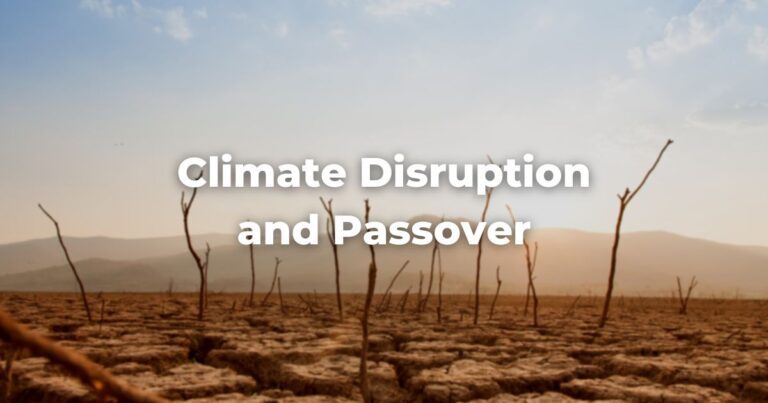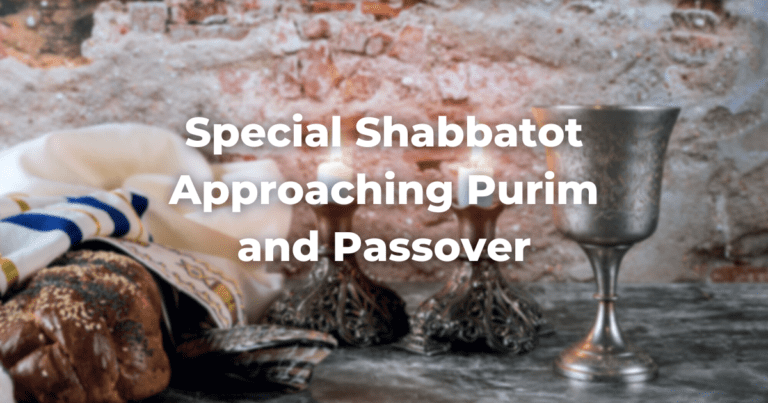Table of Contents
The Passover seder is, for many Jews, the most important ritual feast of the year. Indeed, recent studies indicate that more Jews observe the Passover seder than almost any other aspect of Jewish ritual life.
There is something about this tradition that Jews find compelling above all others. It appears to be the case no matter how far they may have traveled from mainstream Jewish observance in other ways. Perhaps it is the fact that it is a home-based mitzvah that naturally brings far-flung families together, or perhaps it is simply nostalgia or the appeal of the message of freedom from tyranny.
The importance of the Passover seder in the life of Jews everywhere is hard to deny.
Contemporary sedarim (plural for seder) are as varied as the Jews who gather to observe them. They can be long or short, traditional or creative, but all revolve around the central biblical imperative expressed in Exodus 13:8:
“And you shall explain to your child on that day, saying that [all] this is because of what the Eternal did for me when I came forth from Egypt,”
This is what the Tradition understands as a requirement. The story of the exodus from Egypt must be told to Jewish children in every generation. The Passover seder is the cumulative result of untold generations of Jews telling the same story.
Is this your first seder? Check out our guide here.
The Haggadah
The Haggadah is the book that guides participants through the seder. It is a composite text developed over the centuries as a fulfillment of that same mandate.
One of the most crucial factors in determining the quality of a seder has to do with the choice of the right edition of the Haggadah. There are many from which to choose. The Haggadah has been published in more editions than any other Jewish book since the dawn of printing. More than three thousand of them.
The Feast of Freedom, for example, is an edition of the Haggadah published by the Conservative movement. It is a fine example of the kind of Haggadah that brings together a modern translation, attractive artwork, contemporary additional readings, and many elucidating explanations of how exactly to perform the rituals correctly.
Some families like all participants to have the same edition of the Haggadah in front of them so that everyone can literally be on the same page. Other families distribute different editions of the Haggadah to different participants to be able to ask each to share insights from their own Haggadah. This adds to the variety of comments at the table.
Either approach works. The key detail is that time must be taken in advance to determine which edition or editions of the Haggadah will be best for the kind of seder one is hoping to create in one’s home.
It will often be the case that many different people of different ages and different approaches to Judaism will all end up sitting around the same seder table. Rather than seeing this as a problem to be solved, it is more productive to view such a situation as an opportunity to make the seder interesting and lively.
You can see the Haggadah as a fixed script to be read out loud, or as a jumping-off point for lively discussion and debate. A seder discussion that veers off from “we were slaves to Pharaoh in Egypt” to a debate regarding the various things that still enslave people today is not a bad thing: it is the main thing.
It is not necessary to recite every word of the Haggadah out loud. That said, every effort should be made to cover each of the fourteen traditional parts of the seder. They are listed at the beginning of every traditional Haggadah and below.
The Order of the Hagaddah
-
- Kaddeish (the recitation of Kiddush),
-
- U-r’ḥatz (the first washing of the hands, done without the recitation of the traditional blessing),
-
- Karpas (the eating usually of a green vegetable like parsley, or any vegetable that grows in the ground),
-
- Yaḥatz (the breaking of the middle matzah, which will be used as the afikomen dessert at the end of the meal),
-
- Maggid (the actual retelling of the story of the exodus from Egypt. It includes the asking of the famous Four Questions, the recitation of the Ten Plagues, the singing of Dayyeinu, and the drinking of the second cup of wine),
-
- Roḥtzah (the formal washing of the hands a second time, this time with the blessing),
-
- Motzi Matzah (eating the matzah,with its two introductory blessings),
-
- Maror (eating the bitter herbs, with its blessing),
-
- Koreikh (combining the matzah, the bitter herbs, and the ḥaroset into a kind of a sandwich. This is in accordance with the lesson of Hillel included in the Haggadah),
-
- Shulḥan Oreikh (eating dinner),
-
- Tzafun (eating the matzah that had earlier been set aside as the afikomen dessert),
-
- Bareikh (reciting the Grace after Meals, the birkat haMazon. This includes the third cup of wine and the ritual opening of the door to Elijah, the harbinger of messianic tidings),
-
- Hallel (singing most of Hallel aloud, concluding with the fourth cup of wine), and
-
- Nirtzah (a closing hymn stressing the redemptive hopes embedded in all Passover celebration and concluding with the famous words, “Next Year in Jerusalem!”), followed by a series of well-known closing table songs.
Each of these fourteen stages of the seder should be seen as an opportunity for creative, interesting discussion. Participants should be open to the insights and input of the unique personalities seated around the table. There are many ways to innovate while remaining faithful to the specific halakhic requirements of the seder, but the bottom line is always the same: not to be slaves to the Haggadah.
The Seder Plate
The seder plate must be prepared in advance and should have the following items on it:
-
- the z’ro·a (a roasted shank bone),
-
- the beitzah (an egg),
-
- the maror (some bitter herbs or horseradish),
-
- the ḥaroset (a chutney made, in the Ashkenazic tradition, of apples, wine, and nuts), and
-
- the karpas (a green vegetable, usually parsley, although potatoes could also be used. Any vegetable over which the borei p’ri ha-adamah blessing is recited).
-
- Some seder plates contain a spot for ḥazeret (a bitter vegetable, often romaine lettuce). This stems from a controversy over the commandment in Numbers 9:11 that requires that we are to eat the paschal lamb “with unleavened bread and bitter herbs.” (Some authorities interpret this reference to bitter herbs in the plural as requiring a second form of bitter herb to be consumed in addition to the maror. Most, however, do not feel this is necessary.)
A plate should also be prepared with three matzot. Two are in place of the regular two loaves that adorn any festival or Shabbat table. The third is for the afikomen.
Where does the Seder come from?
The Passover seder is patterned after an ancient Greco-Roman meal of luxury.
Pillows are often provided for the diners to facilitate their obligation to recline while eating. This is not merely to list to one side. Rather, it is a way to express gratitude for the freedom granted the Israelite slaves by dining in a way that was, by rabbinic times, the preferred dining position of the free and the wealthy.
The Four Cups
There should be enough wine to fulfill the requirement of the four cups for each diner. More wine than that may be consumed during the actual meal. Kosher grape juice should be provided for children and for those who must refrain from alcohol.
Matzah
The eating of matzah is a mitzvah at the seder.
Eating matzah is optional during the rest of Passover. However, eating hameitz is strictly forbidden for the duration of the festival.
Some very pious Jews purchase and eat only a special kind of matzah called matzah sh’murah (or, more popularly, sh’murah matzah). Extra care was taken to guarantee that the grain from which it was made did not come into contact with water even before it was made into flour.
This far exceeds the legal requirement for matzah, and is generally, not a feature of sedarim in most Conservative Jewish homes.
Miriam and Elijah’s Cup
There are many ancient and modern traditions associated with the Passover seder. A special cup called the Cup of Elijah is set on the table. Tradition expects the prophet Elijah to announce our ultimate redemption and the coming of the messiah. (Some fill this cup at the onset of the seder, but others wait to pour the wine until the moment at which the door is opened formally to welcome Elijah to the seder. Others pass the cup around the table with all participants adding a little of their own wine. This approach symbolizes that redemption today requires that each and every one of us pitch in and offer our help.)
Many families today also feature a Cup of Miriam on their seder tables. Unlike the Cup of Elijah, this one is filled with water. This symbolizes that the tradition remembers Miriam as having been instrumental in the Israelites’ successful effort to find water during their years spent wandering in the desert. Also, this cup enables seder participants to pay tribute to the heroines of Jewish history, past and present.
The Plagues
There is another custom connected with the wine served at the seder. As we count off the ten plagues in the Magid section of the Haggadah, there is a custom of removing ten drops of wine from our cups by dipping a finger in the wine and transferring the wine onto a dinner plate.
Some explain this use of our hands recalls that the plagues were the work of God’s hand (cf. Exodus 8:15) and not merely a series of conveniently timed natural catastrophes. Others say that the custom is intended to remind us that all humanity is created in God’s image. The death of any human being, therefore, diminishes God’s presence in the world.
Eggs at the Seder
Many families begin the seder meal by eating a hard-boiled egg dipped in saltwater. There are many reasons offered for this custom. The most likely reason is that the egg is a symbol of spring and of rebirth, a fitting first course at the feast of freedom.
The Second Night Seder
In the Diaspora, a second seder is conducted on the second night of Passover. This seder follows the same format as the first night, although there are some slight liturgical changes.
Adapted with permission from The Observant Life.
Authors
-

-



The Observant Life: The Wisdom of Conservative Judaism for Contemporary Jews distills a century of thoughtful inquiry into the most profound of all Jewish questions: how to suffuse life with timeless values, how to remain loyal to the covenant that binds the Jewish people and the God of Israel, and how to embrace the law while retaining an abiding sense of fidelity to one’s own moral path in life. Written in a multiplicity of voices inspired by a common vision, the authors of The Observant Life explain what it means in the ultimate sense to live a Jewish life, and to live it honestly, morally, and purposefully. The work is a comprehensive guide to life in the 21st Century. Chapters on Jewish rituals including prayer, holiday, life cycle events and Jewish ethics such as citizenship, slander, taxes, wills, the courts, the work place and so much more.
View all posts





